Your refrigerator is empty, the electricity is about to be shut off, you lost track of how long it’s been since the Mountain Dew ran out – and your dog hates you.
But everything is OK.
Why, you ask? Because it’s finished.
Those last few pre-paid electrons powering your computer and the monitor connected to it display the proof that it was all worthwhile. That last visual effects shot, the one you swore three years ago would have to be cut because you didn’t have time to learn After Effects, looks amazing rendered in the final cut.
Ya, everything is going great right now, but trust me, a few weeks down the road, when the cold weather starts to creep into your unheated home and there are no adoring fans to keep you warm at night – that is when you are going to really start thinking seriously about marketing.

Obligatory snowball picture
When most creators get to marketing they start with $0 left, having spent everything on the cool stuff that ended up on screen. Now I can’t say that I blame them, there isn’t necessarily anything wrong with that, but it is pretty damn important if you ever want someone to see what you put all that work into.
Hopefully you’ve read the previous article in our marketing series, The Concept of Influence, as this one follows that one directly. That article infers that you, young filmmaker, have a fairly limited sphere of influence. Your mom really wants to watch the show, your crew is super excited, even your co-workers bug you about it from time to time. You probably have even built a Facebook page for it, but beyond that group, who knows about the show? Who is really interested? How many people even know about that last, life altering shot?
Just about every creator I have met hits the pavement, and reaches out to everyone that they know in the hopes of snagging a few fans for their work. The sad truth is, your friends aren’t really all that interested. Your mom isn’t going to understand your work anyway. These people are curious, but they are not your fans. How many of them can we really expect to become evangelists for our work in the future?
There are a lot of tried and true methods of growing that circle of influence to include real fans. Most successful shows meet new fans at genre related conventions. But how many people can you really meet? How well can it go when people have never heard of you before?
In the previous article we talked a bit about Robert Downy Jr. and how he has attached himself to well promoted projects in the past. RDJ is worth as much as he is in part because of the push that’s been given to him by those projects in the past. How many butts could he put in the seats for a film with absolutely zero marketing behind it?
Robert Downy is a brand, a brand that says “You will like this movie.” He is your trusted source of quality recommendations for his fans. When you see his face plastered all over the television, and the billboards for his next movie, the studio is showing his fans that there is a new movie coming out that they will like.
It’s taken years, but he has become the avalanche of influence we all dream to be.
So how does this relate to you? You probably have that circle of friends that trust your movie recommendations, but that’s not going to get your own series off the ground like a Robert Down Jr. would.
You can work the rest of your life seeking out potential fans individually, people that will become followers of you and of your work for years to come, but you will never reach that level on word of mouth alone.
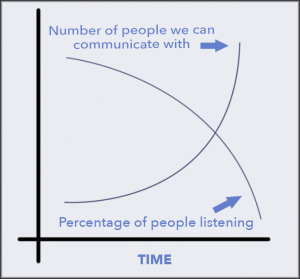 It’s funny, we think about the internet as this amazing invention capable of giving us a platform for our voices to be heard by the masses – and it is – but with so many voices it turns out that people aren’t really listening all that much more today than they were two hundred years ago.
It’s funny, we think about the internet as this amazing invention capable of giving us a platform for our voices to be heard by the masses – and it is – but with so many voices it turns out that people aren’t really listening all that much more today than they were two hundred years ago.
When we go it alone we are going the same route as artists like Vincent Van Gogh. Even as we try and harness the power of social media and the internet we are still communicating with individuals directly – one at a time. For Van Gogh he got the ball running, and that snowball eventually turned into an avalanche, but not until years after his death. His snowball simply had to start far too small.
You don’t have to follow that path. We have the power of mass media that artists like Van Gogh never had access to. Our snowball might start out the same size as Vincent’s, but we have the ability make it bigger instantly.
I like to use the metaphor of a snowball becoming an avalanche because that is very much what you are trying to do with your marketing. The snowball represents exponential growth potential over time, the key is to start out with the biggest snowball you can.
Back to Robert Downy Jr. and the question I asked earlier. RDJ can personally fill a theater on his own no problem at all – one tweet is all it would take. Still it has been years and years of marketing pushes, building his name and creating his brand that has allowed him to do that. His snowball has been rolling for a long time, and let me tell ya, they packed that thing really tight with a shit ton of snow before they rolled it down the hill.
This is why you need to budget for advertising.
Sure it’s expensive, but try hitting the pavement with your show and see how much work you put in for the return you get. It’s quite an interesting feeling the first time you meet someone who recognizes your work, who wants to know what you’re up to next. It’s certainly a lot more fulfilling than meeting someone who doesn’t know your work, who you then try and convince to watch it.
Now that you agree that we need to advertise, how do we go about doing that? The key here is to find those key influencers that can be evangelists of your show. This is a lot tougher than it sounds. Most show creators tell me that their show, “should appeal to anyone” so good luck narrowing down the list of quality influencers of ‘anyone.’ Oprah maybe, if you can swing it.
So get at it, make that list. Who specifically should your series appeal to? Where do these people spend time? Who do they trust?
For most the idea of running a tv commercial, buying a billboard, or advertising on bus benches is absurd, and at our level it most certainly is. But those aren’t your only options. How about these?
- Youtube channels – preroll advertisements, or collaboration. People at your level of influence would love to collaborate with you, and those above you can be bought!
- Podcasts – guest appearances, host shout outs, or commercials. If you can’t get on the show, pay for it.
- Blogs – there is a guy out there right now who needs an interesting story to write about. There is advertising space available. Make your presence felt!
- Facebook pages – People who love ‘Fear And Loathing In Las Vegas’ will instantly fall in love with your web series. Who knew that you can pay Facebook to let them know just that?
The list goes on, be creative, think outside the box, budget as much as you are comfortable spending, remember it’s only your career you are promoting.
It is important though to make sure you have the ability to collect those fans you connect with. Remember you are trying to open up a long term dialogue with these new found fans. Perhaps some day you’ll just need to put your name on a billboard and that will be enough, but for now we still need to be a bit more personal.
Email lists are the best method, but anything is better than nothing. You want to be able to reach out to these people in the future. The cool thing about that is, the first time they hear of you they might be skeptical, the second time they are ready to dish out their full support.
And lastly, a good ad is one thing, and a good product is another – when you are dealing with the general public there are no excuses, no allowances for handicaps, no room for mistakes – you must deliver on both.
What I have found is that when you can be completely professional all the way through the process – from your ad, to your online presence, to your show – people will not associate you with other web series. They want to know, ‘when is it coming out in theaters?’

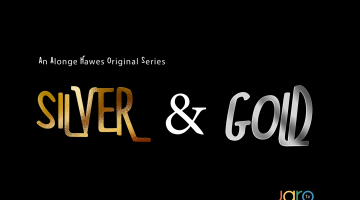



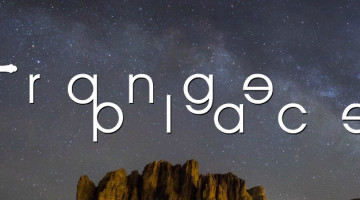

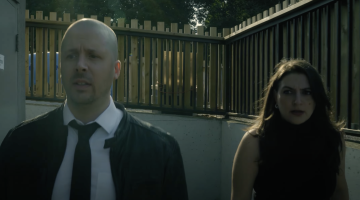
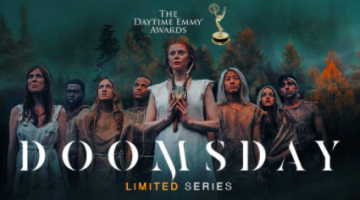

No Comment